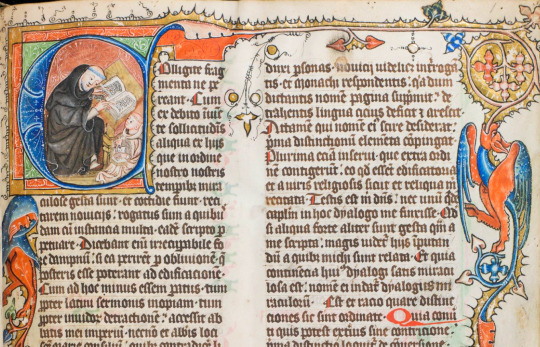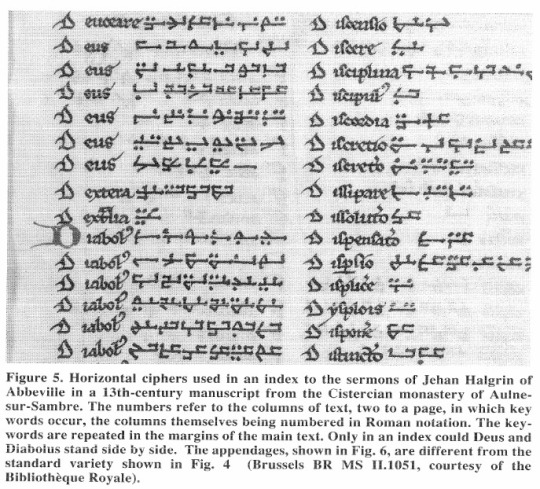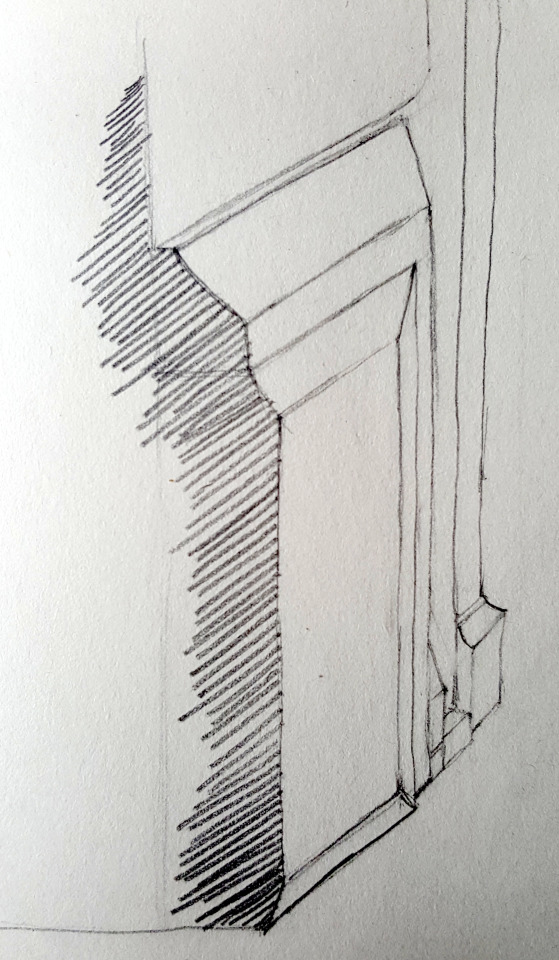#cistercian
Text

Established as a Cistercian abbey in the 13th century, the Royaumont Abbey is situated in the township of Asnières-sur-Oise in France. The cloister of the building, with its arched formations and carved pillars, is one of great architectural importance. The building houses the graves of many members of the Royal French family or descendants of Louis IX. Today, the abbey is a popular tourist attraction and guided tours of its premises are available.
📸: Antoine Versluys
#dark academia#light academia#classical#academia aesthetic#escapism#academia#books and libraries#classic literature#architecture#books#Cistercian#abbey#13th century#Royaumont#Asnières-sur-Oise#France#french#graves#royal core#cottage core#aesthetics#mood#vibe#tumblr
278 notes
·
View notes
Text

'Beauty for ashes' - the ruins of Melrose Abbey in southern Scotland
#Melrose Abbey#Roxboroughshire#Scottish Borders#churches#monastery#Cistercian#mediaeval#Christendom#AD 1126#Gothic architecture#perpendicular#flying buttresses#ruins
100 notes
·
View notes
Text
The Royal Monastery of Santes Creus has revealed some of its history during restoration, which unearthed the intact remains of medieval Catalan nobility! From royal lineages to daily life insights, this 'exceptional discovery' opens new doors to understanding the royal ancestry of 13th and 14th century Europe.
15 notes
·
View notes
Text
In the Liturgical Calendar, today is the Feast of St Nicholas. St Nicholas (Naomh Nioclás) is believed to have been buried in Newtown Jerpoint in Kilkenny some 800 years ago.
According to local Irish legend, St Nicholas is buried in Co Kilkenny. The grave is said to be in the ruined Church of St Nicholas, Jerpoint. The church is all that remains of the medieval village, Newtown Jerpoint, that fell to ruin by the 17th century. The village was surrounded by the Cistercian Jerpoint Abbey, founded in 1183. Located on 1,880 acres, the abbey had its own gardens, watermills,…

View On WordPress
#&039;The Bones of Santa Claus&039;#Bill Watkins#Church of St Nicholas#Cistercian#History of Ireland#Holy Land Crusades#Ireland#Jerpoint Abbey#Kilkenny#Saint Nicholas#Santa Claus
10 notes
·
View notes
Text

“Although our ancestors stopped building temples according to the original recipe over two thousand years ago, one building in particular sought to rekindle interest in ancient spiritual traditions.
After the founding Knights Templar and Cistercians (two interrelated Orders) gleaned the secrets of sacred architecture from the Arab world, they introduced the Gothic cathedrals to Europe. Gothic comes from goetia (‘to elevate by magical force’), whose extension is goeteuein (‘to bewitch’), and alludes to a science that generates an altered state of awareness. Indeed, under certain conditions, brainwaves inside these buildings are ‘raised’ 400% above normal waking state.
Part of the formula is hardwired in the details. For example, initiates of the Chartres Mysteries School would be taken to the nearby cathedral where the knowledge would be revealed, such as the mathematics of the music scale; 32.72º (the angle of repose/gravity); 19.47º (the angle of energy upwelling on planets); and 23.3º (the mean axial tilt of the Earth).
A sermon in stone? Absolutely.”
Extracts from, Chartres: The Missing or Heretic Guide
http://invisibletemple.com/book-chartres-cathedral-guide-by-freddy-silva.html
#sacred geometry#knights templar#cistercians#Cistercian#fav#cathedral#temple#lost keys of freemasonry
41 notes
·
View notes
Text

The Cistercian Abbey of Cârța is one of the oldest Gothic sites from Romania and the most Eastern monument the Cistercians built in Europe. Also known as Cârța Monastery, the ruins are today among the unique historical attractions of Transylvania.
Photography: dorinser
#romania#transylvania#cârța#sibiu#eastern europe#cistercian#abbey#monastery#monks#architecture#gothic#building#ruins#history#europe#photography#aesthetic#scenery#landscapes#transylvania county
98 notes
·
View notes
Text


Caesarius of Heisterbach (ca. 1180 - ca. 1240)
Detail of two illuminated capital letters
MS-C-27 - Dialogus miraculorum, 14th century
Heinrich Heine Universität Düsseldorf
2 notes
·
View notes
Text

Cistercian Waldsassen Abbey in Bavaria, Germany. Dissolved and secularised under the Reichsdeputationshauptschluss in 1803, sold and used as a cotton factory. Re-opened as a Cistercian nunnery in the 1860's.
German vintage postcard
#opened#vintage#photography#1803#postkarte#cotton#carte postale#reichsdeputationshauptschluss#postal#1860#abbey#briefkaart#nunnery#postcard#old#cistercian#factory#german#waldsassen#bavaria#germany#dissolved#photo#secularised#ansichtskarte#waldsassen abbey#sepia#sold#postkaart#ephemera
7 notes
·
View notes
Text
16 notes
·
View notes
Text
Cistercian Ciphers in Manuscripts


To see more details to decode Cistercian ciphers: So, Cistercian Ciphers (at historysurvivalguide.com)
8 notes
·
View notes
Text
youtube
In the Shadow of Time: The Silent Ruins of Croxden Abbey, Staffordshire
The ruins of Croxden Abbey are tucked away in the beautiful, peaceful Staffordshire countryside.
Come with me as we explore the ruins and learn about the history and significance of what was once a revered centre of spiritual life and agricultural innovation.
Walking among these ancient stones, we'll uncover the stories of the monks who lived and worked here and see firsthand the architectural wonders that have withstood the test of time.
If you love our local history, don't forget to follow me, check out my videos and sign up for my newsletter on my website http://www.theredhairedstokie.co.uk
If you enjoy this page and my content, please consider buying me a coffee here - https://www.buymeacoffee.com/jennagoodwin
I appreciate your continued support.
#staffordshire#youtube#history#stoke on trent#heritage#medieval#cistercian#abbey#alton towers#port vale#stoke city#staffordshire moorlands#tudor#religion#monastry#monks#henry 8th#the tudors#Youtube
0 notes
Text









When I joined the MSc course of Architectural Conservation at the University of Kent, I didn’t know much about British heritage and practice. Driven by my passion for historic sites, I came to discover astonishing architectural styles and historic preservation practices and philosophies. The ‘Conservation Principles’ module confronted me with some tricky questions. Should a historic building be saved partially or totally? Why do we care about its preservation? When was the building destroyed and what has been lost? How should we preserve? I soon realized that answers based only on personal views and culture can be biased… Only by studying the cultural, geographical, socio-economic and political context of a historic building can we really understand its significance and proceed to restoration.
There are different attitudes to conservation. It was fascinating to compare philosophies as different as those of Violet le Duc, John Ruskin, Cesare Brandi, and Camillo Boito, as well as conservation charters such as those of Venice and Athens. In addition to conservation philosophy, the programme introduced us to historical societies, charities, trusts, funding bodies and community involvement regarding heritage. I realized that besides understanding the UK planning system, one should be familiar with the work of amenity societies and funding bodies. After all, successful historic preservation in the UK lies in the combination of a robust legislation with the work of societies such as the Society for the Protection of Ancient Buildings (SPAB) and the Victorian society, organizations such as English Heritage, and funding bodies such as the Heritage Lottery Fund.
After this initial focus on policies, laws and philosophies, it was time for action… I was very excited to hear that the Spring Term module ‘Intervention at Historic Sites’ (January through April) would be delivered in collaboration with the SPAB and would be based on the Society’s ‘Old House Project’, the preservation of St. Andrew’s Chapel, near Maidstone. Alas, I missed the first guided visit to the chapel. Visiting it a few days later with a classmate was one of most exciting moments of the programme. This was a unique chance to experience an unspoiled medieval building, which is very little known. Formerly part of the Cistercian Boxley Abbey, the chapel was converted into a dwelling in the 16th century. Abandoned for decades, the chapel is now in an advanced state of decay, but is not entirely derelict. Some of its features, such as the late-Gothic mullioned window, the Tudor chimneys, the post-dissolution half-timbered extension, and the early 20th-century fireplaces survive and reveal the complex history of the building.
Drawing the chapel, looking at its decay, retracing its history, and reflecting on repair methods was rewarding, and designing a proposal of adaptive reuse added to the pleasure… Here are some samples of my analysis of the decay of the chapel.
#architecture#architectural conservation#english heritage#spab#john ruskin#historic england#university of kent#british heritage#cistercian#boxley abbey#adaptive reuse#restoration
1 note
·
View note
Link
Why were and are there so many different types of monks? What’s the difference between Benedictines, Cistercians, Carthusians, Norbertines, Augustinians, and other monks? Why were monks “Spiritual Warriors”? Discover here why there were so many different types of monks in the Middle Ages and the main medieval orders, and also the chief differences between these different monastic orders, at least in the Middle Ages.
#Monks#Medieval#Middle Ages#Benedictine#Cistercian#Carthusian#Norbertine#Premonstratensian#Augustinian#Austin Canon#Spiritual Warriors#Monastery#Abbey
1 note
·
View note
Photo

Just a few of the books in my library written by a certain Thomas Keating. Hard to believe it’s been almost four years since he left us. But what a gift to have had his widom, humor and insight to help us on our collective and individual spiritaul journeys! Thanks to Crossroad Publishing, Bloomsbury Publishing, and Lantern Publishing (distributed by Red Wheel Weiser) for making these amazing books available. PS. Do you see the cat’s paws? That’s Little Mama, who was “helping” me with my photo shoot. #ThomasKeating #ContemplativeOutreach #CenteringPrayer #prayer #silence #wisdom #books #bookstagram #Trappist #monks #Cistercian #monasticism #Christianity #Catholicism #prayer #meditation #contemplation #centering #God #mystical #mysticism #contemplation #spirituality @redwheelbooks @bloomsburypublishing @lanternpm @contemplativeoutreachltd (at Clarkston, Georgia) https://www.instagram.com/p/Ci8lsxeunZq/?igshid=NGJjMDIxMWI=
#thomaskeating#contemplativeoutreach#centeringprayer#prayer#silence#wisdom#books#bookstagram#trappist#monks#cistercian#monasticism#christianity#catholicism#meditation#contemplation#centering#god#mystical#mysticism#spirituality
0 notes
Text
In the Liturgical Calendar, today is the Feast of St Nicholas. St Nicholas (Naomh Nioclás) is believed to have been buried in Newtown Jerpoint in Kilkenny some 800 years ago.
In the Liturgical Calendar, today is the Feast of St Nicholas. St Nicholas (Naomh Nioclás) is believed to have been buried in Newtown Jerpoint in Kilkenny some 800 years ago.
According to local Irish legend, St Nicholas is buried in Co Kilkenny. The grave is said to be in the ruined Church of St Nicholas, Jerpoint. The church is all that remains of the medieval village, Newtown Jerpoint, that fell to ruin by the 17th century. The village was surrounded by the Cistercian Jerpoint Abbey, founded in 1183. Located on 1,880 acres, the abbey had its own gardens, watermills,…

View On WordPress
#&039;The Bones of Santa Claus&039;#Bill Watkins#Church of St Nicholas#Cistercian#History of Ireland#Holy Land Crusades#Ireland#Jerpoint Abbey#Kilkenny#Saint Nicholas#Santa Claus
6 notes
·
View notes
Text
Review
History of Water Cisterns: Legacies and Lessons
0 notes